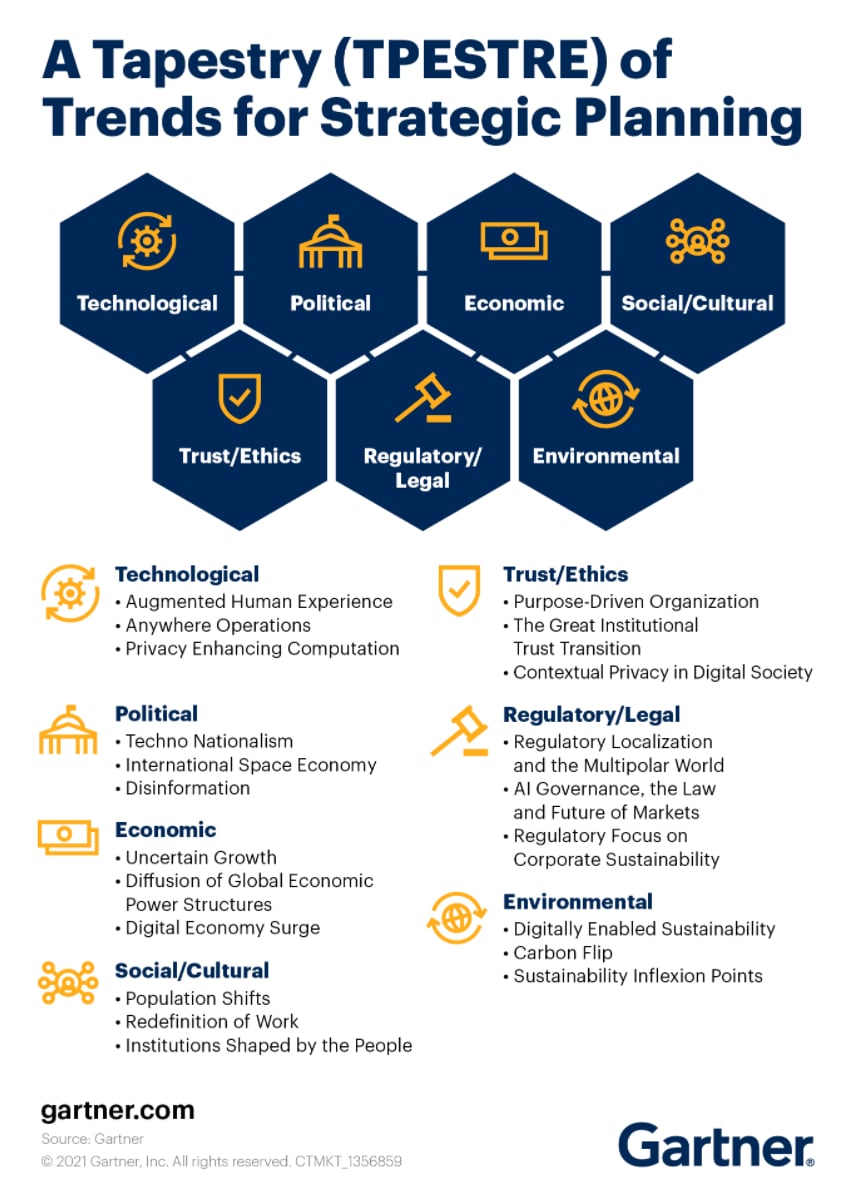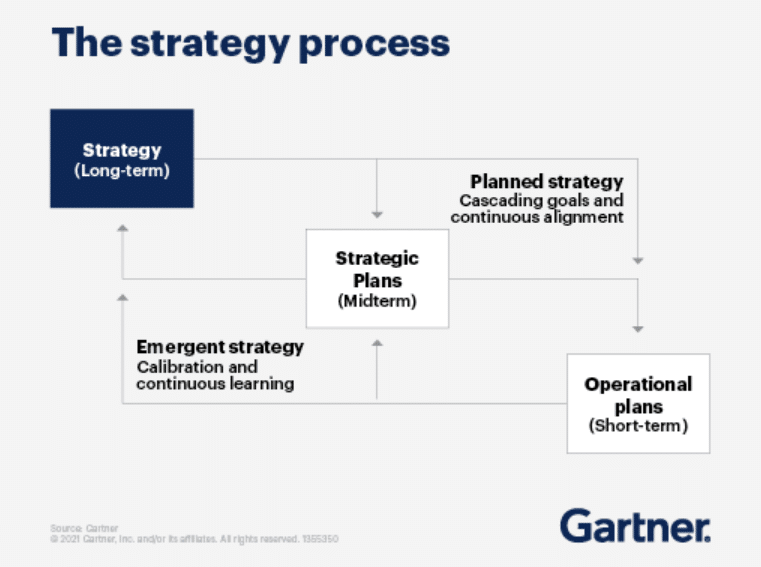The COVID crisis halted most business strategy in its tracks, and many leaders are still trying to figure out when and how to get the strategic planning process back on track. According to new research from Gartner, that time is now—and there’s no time to waste.
Organizations must actively prepare to respond to future disruptions and anticipate change. Executive leaders should evaluate the use of technological, political, economical, social/cultural, trust/ethics, regulatory/legal, and environmental (TPESTRE)—what Gartner refers to as a “Tapestry”—factors and analysis to identify relevant accelerators and inhibitors.
“To succeed in a disruptive future, enterprises must continuously scan and respond to disruptions that will impact and/or threaten to protect the company’s place in the markets where they’ve chosen to compete. These disruptions can undo the digital transformation companies have worked so hard to achieve,” said Marty Resnick, vice president and analyst at Gartner, in a news release. “Executive leaders must evaluate a variety of trends, beyond just technology, and their impact on strategic planning.”
Gartner segments key trends and disruptions into seven major categories, so executives can begin to build planning assumptions most relevant for their strategic plans. The key trend areas to evaluate include:
- Technological: The evolution, impact and disruption of technology change.
- Political: Attitudes, institutions and legislation shifting the political environment.
- Economic: Factors in the local and global economic environment that influence businesses and governments.
- Social/Cultural: Attitudes, behaviors and lifestyles of individuals and societal groups.
- Trust/Ethics: Ethical expectations, behaviors, duties and biases of people and companies toward one another and society.
- Regulatory/Legal: Changes in laws and governmental policies and regulations to reward or punish particular behaviors.
- Environmental: Technical, political, economic, cultural, ethical and legal changes supporting environmental protection and sustainability.
Resnick said organizations need to be deliberate about scouting for trends by incorporating trendspotting, which is the acquisition and evaluation of trends that may impact the organization. A survey of 154 business and IT leaders in February of this year found that only 38 percent of organizations performing trendspotting had a defined, or formal process. Most used an ad hoc approach.
“A deliberate approach ensures that executive leaders consider trends and disruptions that exist outside of their core responsibilities, where emerging trends might be more familiar,” Resnick said. “Executives who are not adequately trendspotting already likely will miss critical inputs to their strategic assumptions and planning. This leaves their organization exposed to blind spots and risk, limiting their ability to capitalize on these opportunities.”










